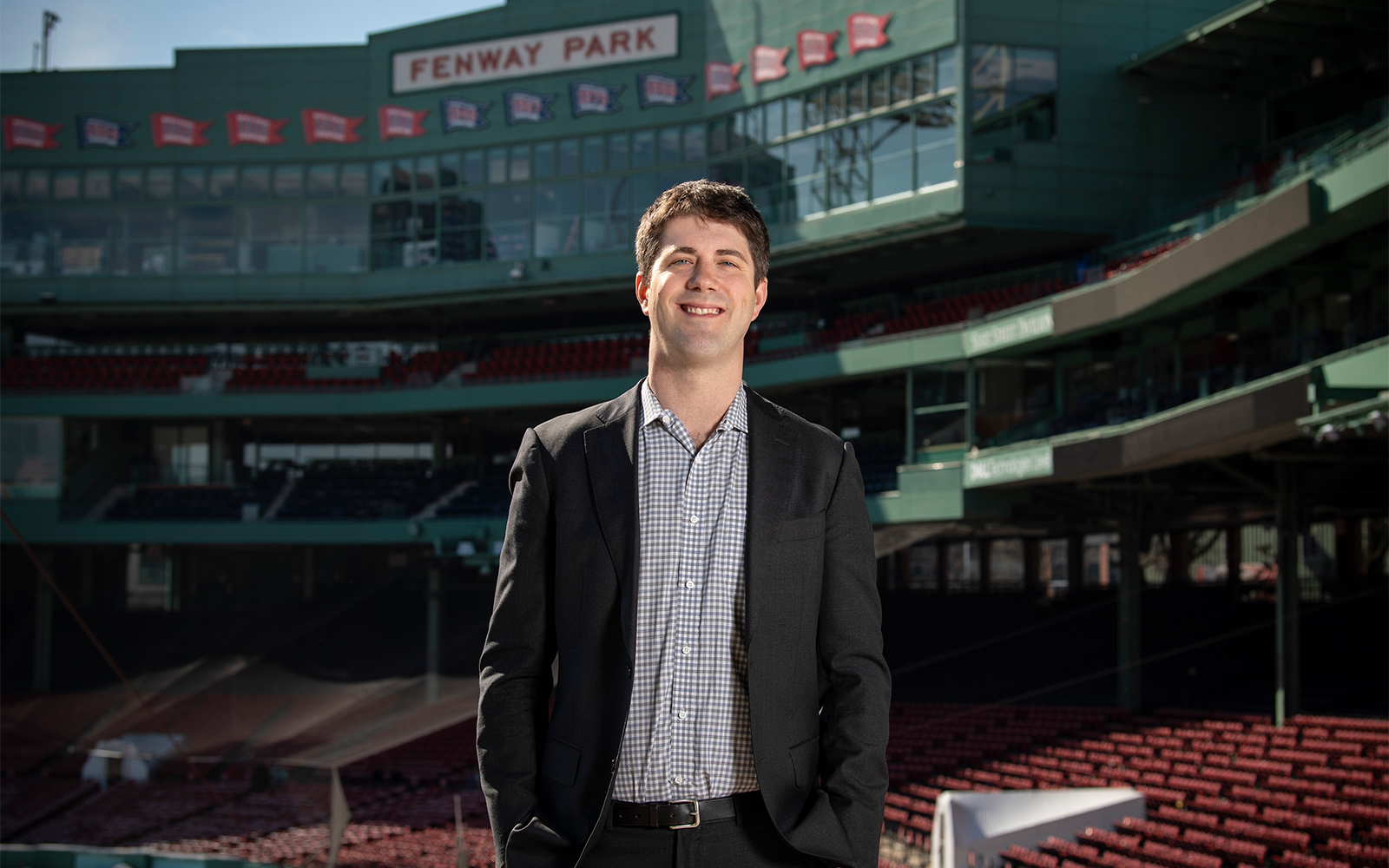|
Getting your Trinity Audio player ready... |
For many families in America, a love for baseball is a tradition. Parents share their passion for the game with their kids by watching games on TV together, teaching the rules of the game, and talking about their favorite players. Then comes that special day of visiting to ballpark to watch their favorite team play.
That wasn’t the case for Jon Hay, who attended his first Red Sox game when he was eight years old, after he, his sister, and his parents moved from Sydney, Australia, to Boston.
“I went to my first baseball game and did not know what was going on,” Hay remembers. “It was very different than cricket, which was what I knew. Baseball is fast-paced compared to cricket, which is one of the few sports that takes longer to play than baseball.”
In his new city of Boston, Hay went to many games and developed a passion for America’s favorite pastime. He studied the player statistics on baseball cards, and read Michael Lewis’ Moneyball, which focuses on Oakland A’s General Manager Billy Beane and his analytical, evidenced-based approach.
While Hay isn’t stepping up to the plate or staring down hitters from the pitcher’s mound, his career in analytics led him to become vice president of data, intelligence, and analytics for his beloved Red Sox.

“The eight-year-old me would lose his mind if I told him that thirty years later, he would get to go to Fenway Park for his job every day,” Hay says.
After graduating from Harvard with an economics degree, Hay followed the traditional path of working on Wall Street, starting his career with Morgan Stanley and trading fixed-income derivatives.
“The story I always tell is about having one of those quiet moments on the trading floor and everyone is looking at stock charts while I’m reading some esoteric baseball analytics article on FanGraphs,” he explains. “That motivated me to consider that maybe I could take what I do building comprehensive analytical models and apply them to baseball.”
He returned to school at the University of Chicago Booth School of Business with a goal of finding a career within sports. A key factor was networking, which led him to meeting Vince Gennaro, the former president of the Society of American Baseball Research.
Gennaro later talked with Bill James, the legendary baseball statistician and writer. James shared that team owner John Henry instructed him to hire an intern, but he wasn’t sure how to go about finding someone. Gennaro suggested that he interview Hay.
“The eight-year-old me would lose his mind if I told him that thirty years later, he would get to go to Fenway Park for his job every day.”
Jon Hay
“I flew to Boston, I met Bill, and we talked baseball for about six hours,” he recalls. “Which you can imagine that as someone who grew up reading his books, it was probably one of the coolest experiences of my life—sitting and talking baseball with him the entire day.”
He took the $8-an-hour-internship and worked on player predictive models and contract analysis. The Red Sox didn’t have a business analytics team or a customer data warehouse at the time. Customer segmentation wasn’t really in place either, which led to Hay getting pulled into work on such projects given his finance and MBA background.
A few years into his tenure, the Red Sox officially hired Hay for a hybrid role where he took over ticketing analytics, and that led to his current role of overseeing all business analytics, data, intelligence, and reporting efforts for the organization.
Since then, Hay has worked on big developments for the Red Sox and their ownership group, Fenway Sports Group, including its acquisition of the National Hockey League’s Pittsburgh Penguins in 2021. He’s also heavily involved in the recent migration to Google Cloud Platform, following Major League Baseball’s deal with Google.
“We have all of our customer data sorted in one space, and we can access it whenever we need to,” he explains. “We can actually answer questions around how many fans do we have, how many people spend more than $1,000 at Fenway Park, and how many people come to Fenway with children. It’s been a huge boon for us.”
Hay and his team are at work on improving the fan experience by making Fenway Park cashless and introducing food and drink ordering through an app, thus cutting down on wait times so fans don’t miss any action.
“We also want to make things affordable for the right games and make sure we have the ability to price down and make the game more accessible for families.”
Jon Hay
Another key revenue-driving project is dynamic ticket pricing. Prior to COVID-19, while the Red Sox charged different ticket prices for different seats and different games, these prices were static over time. Starting in 2021, in partnership with Demand Analytics, the Red Sox made the move to dynamic pricing, meaning that prices throughout the park fluctuate over time based on various factors such as weather, team performance, and pitching matchups.
“If there’s a David Ortiz Hall of Fame night, I want to make sure that we are charging the right amount of money for that and not leaving money on the table for brokers to come in and buy tickets and resell them,” Hay shares. “We also want to make things affordable for the right games and make sure we have the ability to price down and make the game more accessible for families.”
That kind of thinking not only adds to the Red Sox’s success, but also keeps fans engaged in the game they love.
“Jon Hay and his team at the Red Sox have been excellent partners with Demand Analytics. Jon is extremely collaborative and insightful whether discussing consumer demand models, operational integrations, or organizational decision-making. These strengths helped the Red Sox make and implement successful demand-based decisions during the 2021 MLB season using the Demand Analytics software platform. These strengths are also an asset in ensuring our product and partnership remains industry leading.” –Gabe Gershenfeld, Co-Founder & President, Demand Analytics

